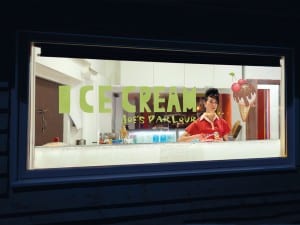In 2018, Tokyo Arts and Space (TOKAS) and The Tokyo Metropolitan Government introduced the Tokyo Contemporary Art Award (TCAA) as a means to support mid-career artists in their pursuit of innovative artistic endeavors. The award provides recipients with sustained backing over several years, aimed at fostering breakthroughs in their practice. This year’s chosen artists, Saeborg (b. 1981) and Tsuda Michiko (b. 1980), represent diverse creative approaches, with Saeborg navigating the realms of sculpture and performance, whilst Tsuda delves into mixed-media art with a focus on video works. Here, we look at the exhibitions of both artists, each offering a unique lens reflecting contemporary culture.



In I WAS MADE FOR LOVING YOU, Saeborg creates a series of inflatable forms that mimic livestock. Brightly coloured animals such as female cattle and pigs touch on issues such as human cruelty and animal consumption, as well as pressing social topics such as nursing and care. The installation occupies a space made to resemble a life-sized farm, delivering an immersive experience that transcends the boundaries between organic and synthetic worlds. The result is a bizarre, fairytale-like setting that verges on dystopian, reminiscent of Richard Kelly’s Donnie Darko (2002) or the indie video game turned horror Five Nights at Freddy’s (2023). Subjects occupy a host of roles, including giving birth, nursing, and being stripped. They shed light on oppressive structures in place in the food production industry, but also our own care systems. Japan’s aging society, one of the oldest globally, sees 28.7% of its population aged 65 or older, with women comprising the majority. By 2036, it’s projected that individuals over 65 will make up a third of the population. This demographic shift places immense strain on the healthcare system, worsened by rising costs and declining labor numbers. Automated care – in the form of robots, has also failed to alleviate the workload, as previously proposed by the country’s national government. Saeborg’s resulting work prompts viewers to consider more deeply their relationship to consumption, duty, and what our bodies can endure.

Elsewhere, Tsuda Michiko delves into our intricate connection with our physical selves through her installation Life is Delaying. The artist is inspired by her own family, creating a work that draws on her experience of having a camera in her childhood home, recording moments of intimacy, ritual and tradition. Since 2016, she has been a member of the performance unit “baby tooth,” a collective that analyses the characters of acclaimed Japanese filmmaker Ozu Yasujiro (1903-1963). Tsuda connects Ozu’s practice with her own, scrutinizing the lens of the male gaze. Ozu’s films depict the transformation of patriarchal society; in Tokyo Story (1953), for instance, we observe the transition of a widow from a dutiful daughter-in-law to an independent subject. In response to this, Tsuda meticulously documents the actions and mannerisms of women in Ozu’s movies, reinterpreting them as choreography in her own artistic endeavors. She explains, “For example, take the way the characters walk. Male actors such as Ryu Chishu tend to walk straight, while female actors such as Sugimura Haruko and Miyake Kuniko walk in a rather meandering manner. In addition to the role of women carrying out various household chores and providing support, it is the movement of women carrying bags, cushions, and carrying tea that contributed to the rich movement of the screen.” Through her exploration, Tsuda reflects on personal experiences whilst also engaging in a broader, critical discourse on gender and power – and its ever-shifting role.
In these exhibitions, Saeborg and Tsuda navigate topics crucial to Japanese society, including gender, consumption, care and tradition. The artists encourage a dialogue where viewers explore their own memories, prompting them to be part of the work and embed themselves fully in the narrative.
The Tokyo Contemporary Art Award 2022-2024 Exhibition runs until 7 July
tokyocontemporaryartaward.jp | mot-art-museum.jp
Image Credits:
1. TSUDA Michiko, Tokyo Behavior, 2021, installation view at “Back TOKYO Forth,” Tokyo International Cruise Terminal, 2021. Photo: Akira Arai(Nacása & Partners Inc.).
2. TSUDA Michiko, You would come back there to see me again the following day, 2016, installation view at “Open Space 2016: Media Conscious,” NTT Inter Communication Center [ICC], Tokyo. Photo: Tadasu Yamamoto.
3. TSUDA Michiko, Looking Back, 2022/2024, mirrors, wood, software, camera. Photo: TAKAHASHI Kenji. Photo courtesy of Tokyo Arts and Space.
4. TSUDA Michiko, Tokyo Shigusa, 2021/2023, installation view at “ICC Annual 2023: Shapes of Things,” NTT InterCommunication Center [ICC], Tokyo. Photo: KIOKU Keizo. Photo Courtesy: NTT InterCommunication Center [ICC].
3. TSUDA Michiko Still from so far, not far, 2023.




